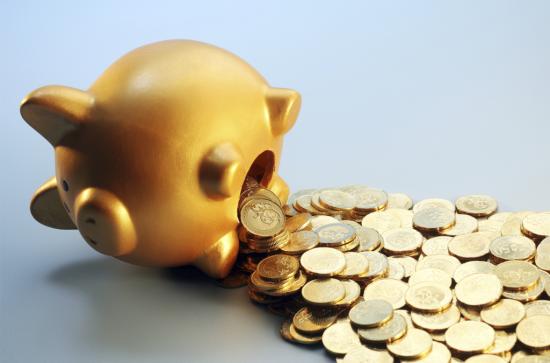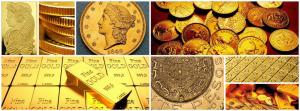Gold Buying Mistake List
By coming to this page you’ve already avoided the biggest gold buying mistake, which is to buy on impulse without informing yourself prior to purchasing. Due to the current surge in precious metal prices, more and more inexperienced investors are entering the market in the hopes of benefiting down the road. That’s why I thought it would be a good idea to write a short article that lists and explains in an easy to understand manner some of the most common mistakes when buying gold. Of course these principles apply to buying precious metals in general, so not only to buying gold but also silver, platinum and palladium. The principles below are listed in no particular order.
Gold Buying Mistake 1: Buying proof coins and other collectible coins
If you are buying gold or other precious metals as an investment instead of as a collector, you should never buy proof coins or other types of collectible coins (such as colored coins, hologram coins etc.). Even though such coins are definitely prettier, they will cost you a much higher premium than the ‘normal’ brilliant uncirculated bullion coins. Your goal as an investor should be to buy the maximum amount of precious metal you can get for your decided investment amount and not to buy the prettiest coins on the market.
Gold Buying Mistake 2: Overlooking coins/bars with blemishes
Besides the mint-fresh brilliant uncirculated coins, many dealers also sell pre-owned coins/bars that may have some blemishes such as scratches, dents or even red spots. Such coins/bars are sometimes listed as almost uncirculated and if the amount of blemishes is substantial they might also be listed as bargain bin gold/silver. Even though these products are not as pretty anymore as they once were, they are the cheapest way for an investor to amass the maximum amount of precious metal. Dealers sell these products (if they have them at stock) for the lowest possible premiums above the precious metal spot price and if you were to sell them on your part in the future, you should always at least get the spot price for them. Precious metals don’t rust after all!
Gold Buying Mistake 3: Buying multiple fractional coins instead of 1 oz coins
Unless you are buying precious metals for bartering in case of a financial collapse (and then you should buy cheap silver coins such as junk silver), it is always better to buy the standard size coins which is almost always 1 oz. The standard size is usually the one with the highest annual mintage as well as the one with the lowest dealer premium. Fractional coins cost more to produce and their dealer premiums are typically several percentage points higher.
Gold Buying Mistake 4: Buying gold when the total investment amount is small
If you only plan to invest a few hundred dollars up to the current market price of a 1 oz gold bullion coin, I would advise to buy silver instead of gold. This way you could acquire quite a lot of 1 oz silver coins or even some larger silver bars and the premium you will have to pay to the dealer will perhaps be as low as 3%. When buying gold, I think the minimum investment amount should be enough to at least be able to buy one 1 oz gold coin or bar (so about 1800$ currently).
Gold Buying Mistake 5: Buying uncommon coins
Whereas it is perfectly reasonable to buy for example the Indian Gold Coin if you happen to live in India, the same buying practice might pose problems for you if you live in the US and plan to sell the coin there at a later time. There is no problem with the coin itself, only that many dealers in the US might not be familiar with it (for example in how to tell apart a real one from a fake) and might therefore refuse to buy it from you when you are ready to sell.
Gold Buying Mistake 6: Buying historic platinum/palladium coins
Once mintage of such coins as the Russian Ballerina palladium coins, the Mexican Platinum Libertads or the Chinese Platinum/Palladium Pandas officially ended, these coins kind of crossed over from being regular bullion coins to being collectible coins. Once mintage of a certain kind of bullion coin ends that had only been minted for a relatively short period of time (as is the case with the coins mentioned above), these limited coins that are in existence become a lot more appealing to collectors. Dealers will therefore raise the premium on these coins year by year which means that you would be paying collectible premiums for a bullion coin!
Gold Buying Mistake 7: Buying coins graded by the NGC or PCGS
When buying gold and other precious metal coins, you might rightfully expect to receive a coin free of any blemishes. However, when buying brilliant uncirculated coins that have not been packaged individually, it is not that uncommon to receive a coin that has some minor scratches on its surface even though it is a “new” coin. These scratches generally occur during the packaging process when the individual coins are packaged in tubes. Since there is no divider in these tubes, the coins can rub together which can cause scratches, especially on gold coins since that is the softest of all precious metals.

Please share this gold buying mistake list on social media if you find it useful!
The Canadian Gold Maple Leafs for example are notorious for being easily scratched like this! However, you should remember that you are buying gold or other precious metals for their material value and not the beauty and flawlessness of their design. That’s what collectible coins are for after all and coins that are graded by the NGC or PCGS for their flawless condition definitely fall into the collectible category (with the resulting higher premiums).
Gold Buying Mistake 8: Buying pre-1933 US gold coins from low mintage years
Even though you can buy many pre-1933 US gold coins (and other historic gold coins) for amazingly low premiums, that doesn’t mean that coins of all years of their mintage run are bargains! It simply depends on how many such coins were produced during a certain year. Fluctuations can be enormous with one year seeing mintage numbers in the millions followed by a mintage in the tens of thousand the following year. On Buy-Gold.Link’s website, you will generally find the mintage numbers listed (if available) so you can easily check which years had the lowest mintage numbers. This will be the years with the highest prices for any surviving coins from that year!
Gold Buying Mistake 9: Buying coins from low mintage branches
Checking the precise mintage numbers of pre-1933 US gold coins is also important for another related reason. Not only do the total annual mintage numbers of certain coins fluctuate widely from year to year but so do the mintage numbers of different minting branches of the US Mint. For a given year, mintage numbers of the same coin at different US Mint branches could be apart by hundreds of thousands if not millions. Coins from whichever mint branch produced the lowest numbers are now available (if at all) for the highest premiums.
Gold Buying Mistake 10: Buying divisible bullion bars
The reason why divisible gold bars (as well as divisible bars out of silver, platinum and palladium) sell so well is that they are primarily bought by preppers. These are buyers that are preparing for an upcoming global financial crash (for example due to hyperinflation) that could make paper money worthless. Precious metals could be used for bartering in such a situation and that’s what makes bullion bars that can be broken down into individual segments (like PAMP Suisse‘s divisible bars or Valcambi‘s CombiBars) useful. However, producing such bars is more costly for the mint and these higher production costs are of course passed on to the consumer in the form of higher premiums.



We needed these lists of mistakes to be avoided when investing in gold. Thank you for sharing this great idea.